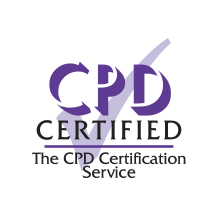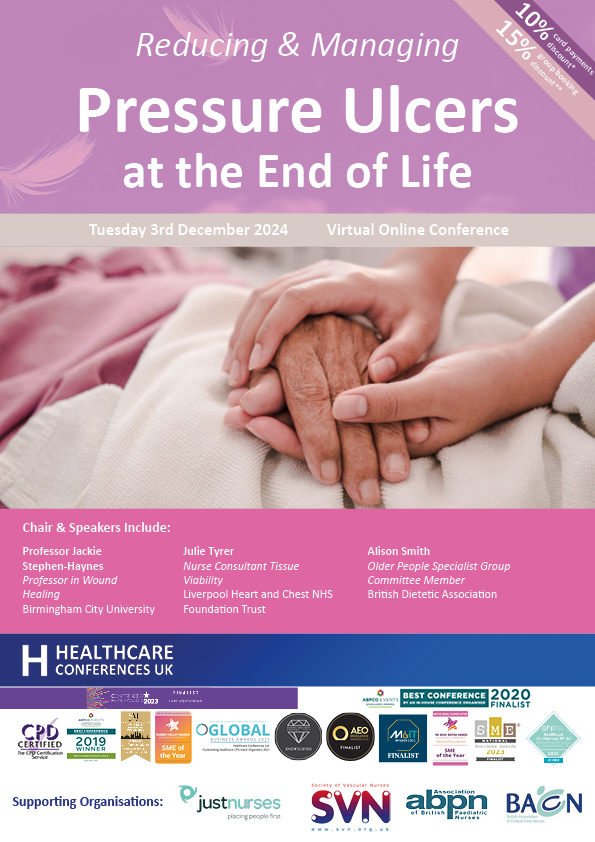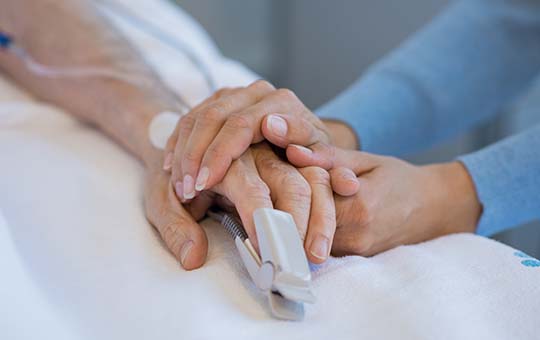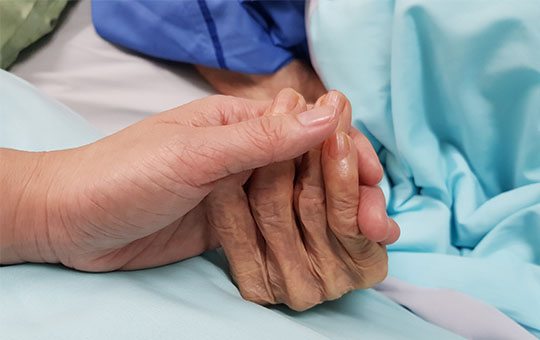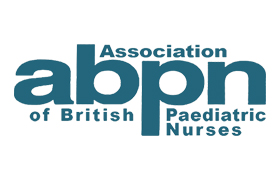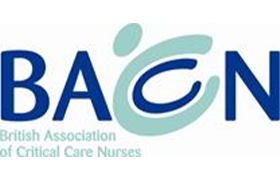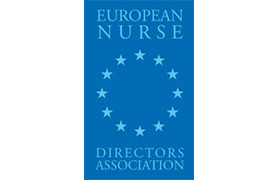Follow the conference on X #PUEndofLife
This conference focuses on the prevention and management of pressure ulcers at the end of life. Wounds are a common occurrence in patients with terminal illnesses, it has been estimated that approximately one third of palliative care patients will experience a pressure ulcer. Pressure wounds are seen most often in elderly and terminally ill patients as a result skin failure — a naturally occurring process commonly associated with terminal illness wherein the skin begins to break down and die. At the end of life multiple risk factors can lead to pressure ulcers. The prevention and management of pressure ulcers at the end of life must also be balanced alongside the patients preferences presenting ethical dilemmas such as when prevention and active management should stop in the last days of life. Alongside National Update sessions focusing on Pressure Ulcer Investigation and how this is changing under the new Patient Safety Incident Response Framework (PSIRF), this national conference focuses on the reduction and management of pressure ulcers at the end of life, from risk assessment to controlling pain and discomfort in the last days of life. The conference will also discuss the new Clinical Pathway for the prevention and management of pressure ulcers and the Pressure Ulcer Best Practice Bundle, and the introduction of PSIRF in Pressure Ulcer Investigation:
It is clear that the current approach, which encourages the investigation of all individual PUs of a certain category, is placing too great a burden on health professionals without achieving the necessary quality improvement. The new PSIRF offers a broader approach to addressing patient safety issues, such as pressure ulceration, taking the focus away from investigation and oversight of individual incidents to instead focus on quality improvement.
Jacqui Fletcher OBE Clinical Editor, Wounds UK, Pressure Ulcer lead, National Wound Care Strategy Programme 2022
Pressure ulcers at end of life should be classified in the same way as all pressure ulcers, and not be given a separate category.
NHS Improvement
This conference will enable you to:
Network with colleagues who are working to improve the measurement, reporting and prevention of pressure ulcers and harm at the end of life
Reflect on national developments and learning including investigation of pressure ulcers and how this is changing under the New Patient Safety Incident Response Framework (PSIRF)
Examine the new National Clinical Pathway for the prevention and management of pressure ulcers and the Pressure Ulcer Best Practice Bundle
Learn from outstanding practice in pressure ulcer reporting
Develop your skills in the management of pressure ulcers, and reducing pain and discomfort at the end of life for patients with them
Developing effective training and education of frontline staff that will empower frontline teams to take ownership for improving care processes and preventing pressure ulcers
Understand skin changes at the end of life
Improve sustainability in the reduction of pressure ulcers
Understand the factors that increase the risk of pressure ulcer development, and explore effective risk assessment tools
Develop a better understanding of pressure ulcer prevention at the end of life
Improve Nutrition and Hydration
Learn from case studies involving difficult to treat pressure ulcers
Ensure you are up to date with the latest evidence and definitions
Self assess and reflect on your own practice
Supports CPD professional development and acts as revalidation evidence. This course provides 5 Hrs training for CPD subject to peer group approval for revalidation purposes
